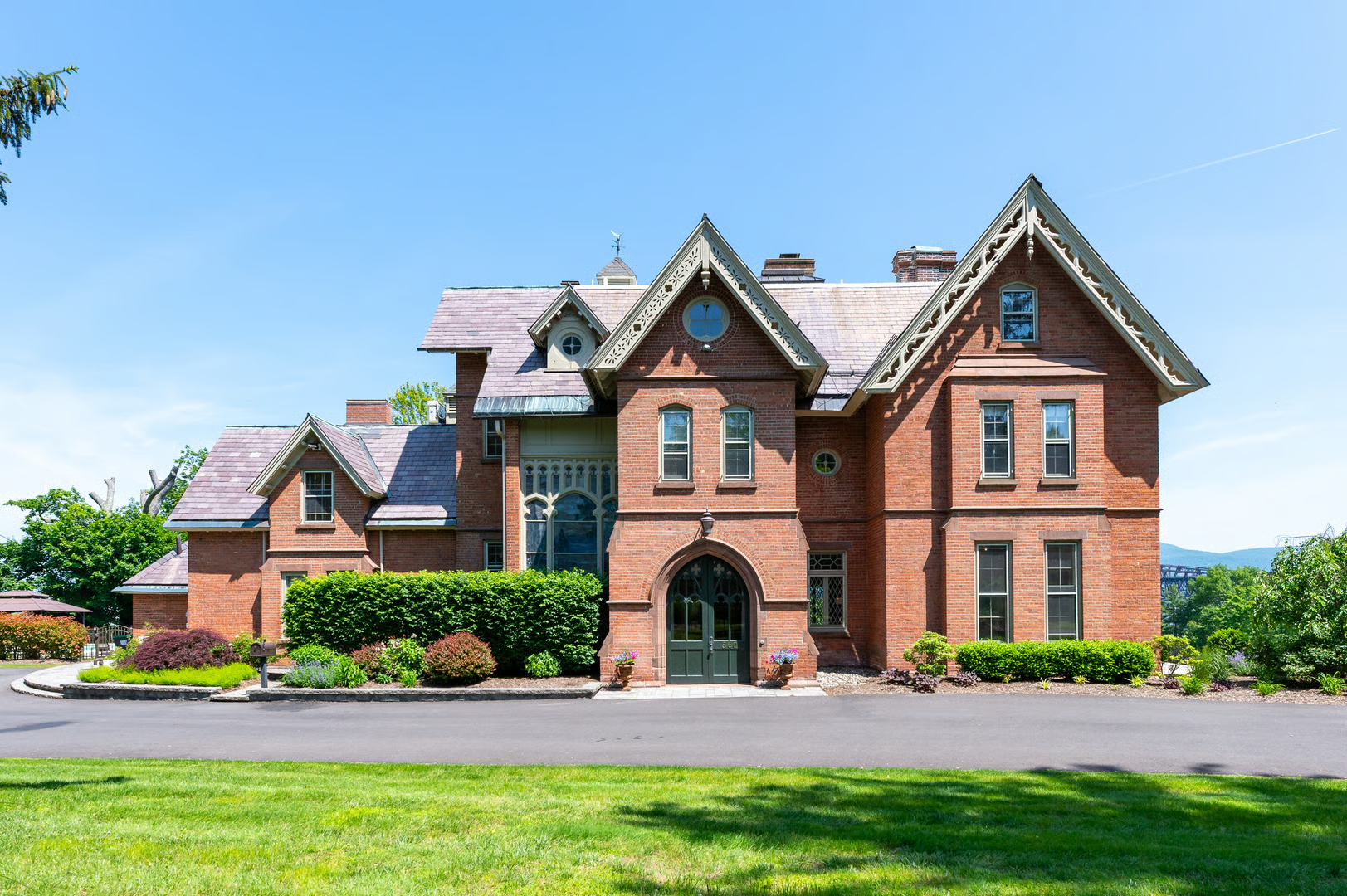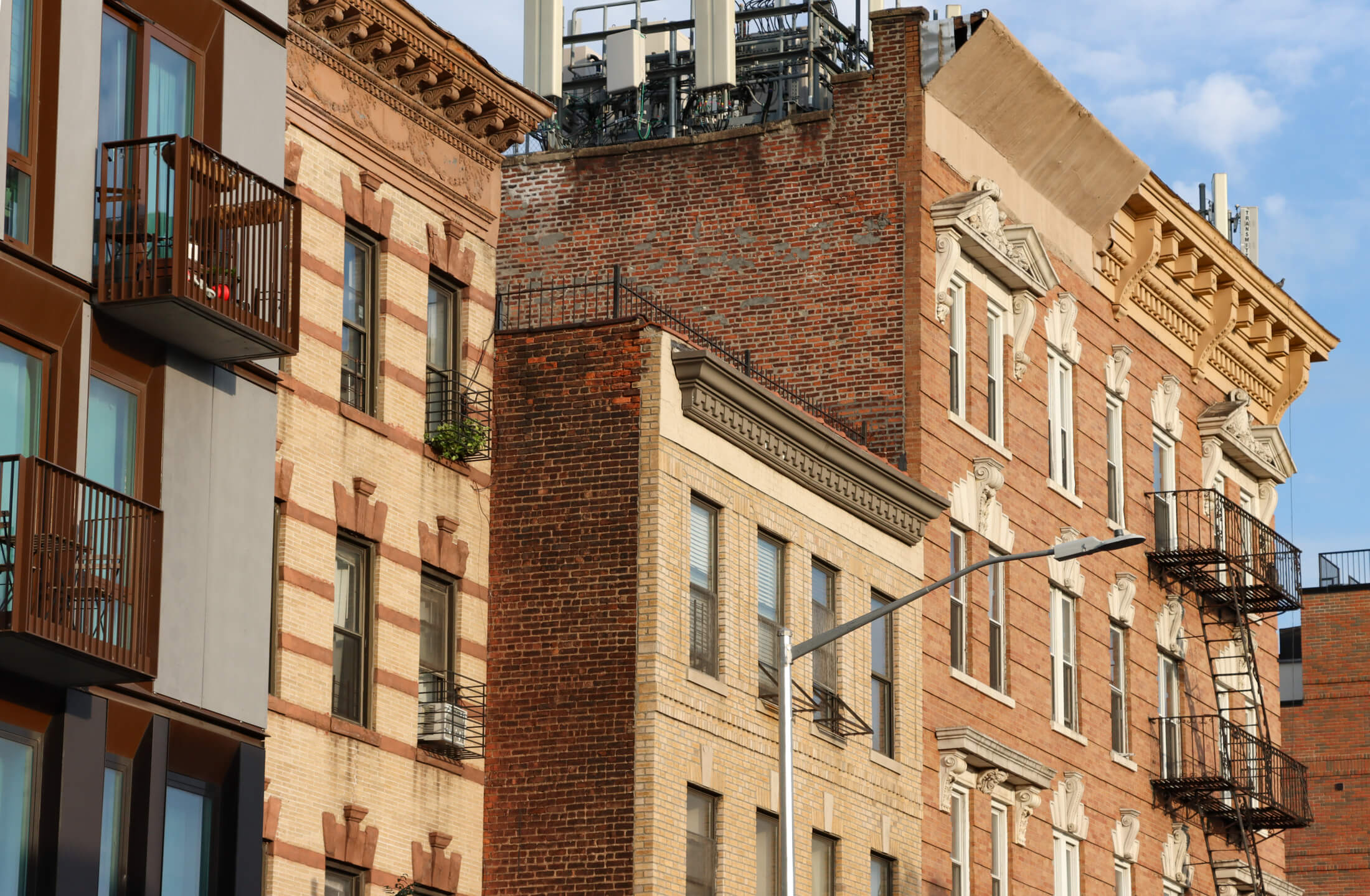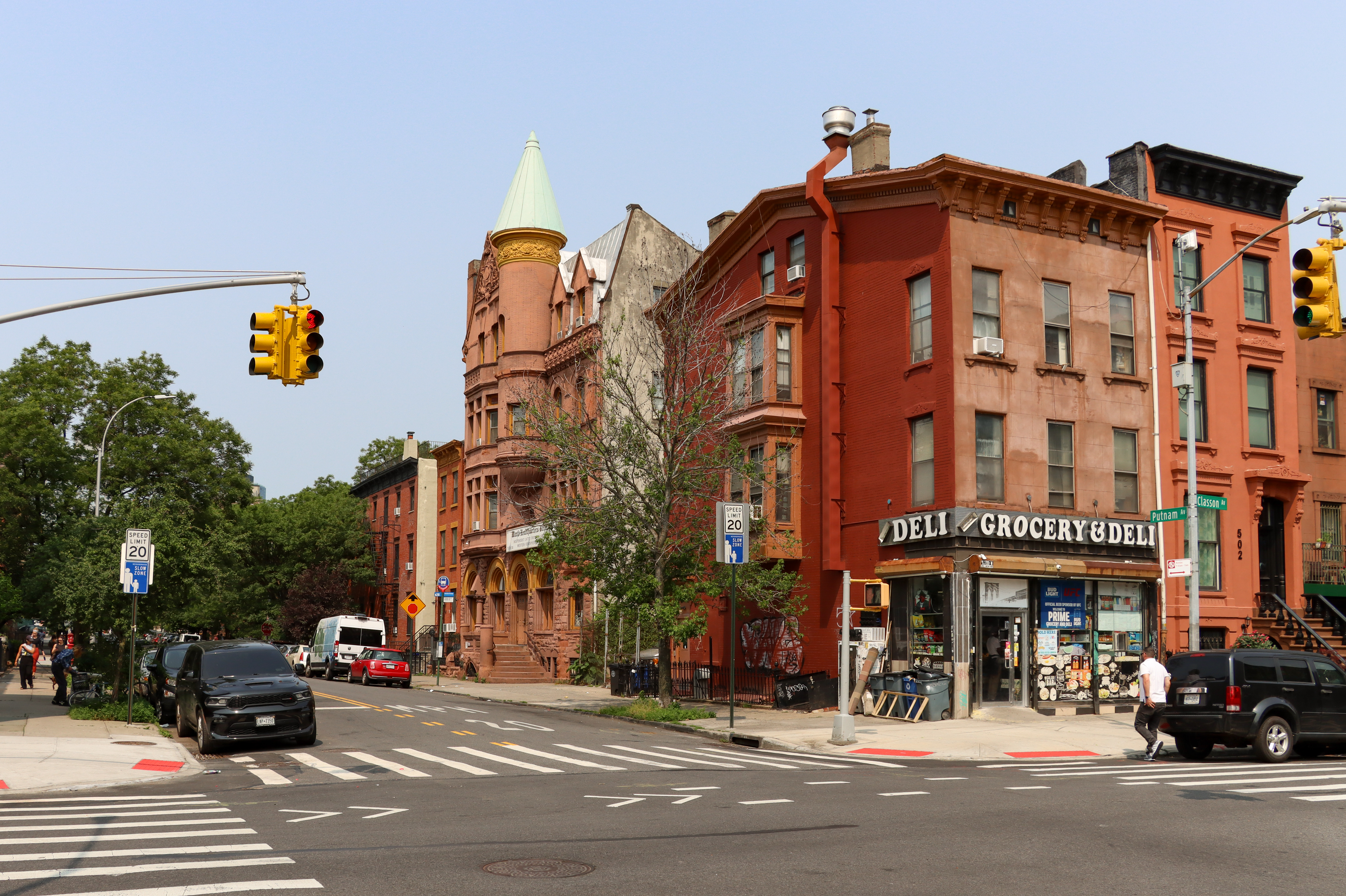Carlton Mews Changes Hands
The troubled development site known as Carlton Mews in Fort Greene changed hands in the last weeks of the year for a price of $5,756,240. (The official transfer is posted on the jump.) The property, which was made up of three separate parcels of land (and included a former church), was originally going to be…


The troubled development site known as Carlton Mews in Fort Greene changed hands in the last weeks of the year for a price of $5,756,240. (The official transfer is posted on the jump.) The property, which was made up of three separate parcels of land (and included a former church), was originally going to be a new townhouse development into the real estate slide made it unfinanceable. Then it was going to be the site of Brooklyn CoHousing’s experiment at group development, but that also fell apart due to financial realities. Now the site, which runs through the block from Carlton to Adelphi Avenues between Dekalb and Willoughby Avenues, has a new Yonkers-based owner by the name of Sprain Brooklyn Realty. Interestingly, Sprain Brook shares a CEO with Hudson Valley Bank, which was the lender on the property (to the tune of $8,650,000), suggesting that this is some kind of foreclosure in a purchase’s clothing. We’ve got no idea what the plans for it are now. Anyone know?
Carlton Mews Cleans Up [Brownstoner] GMAP
Carlton Mews Back on Track [Brownstoner]
Carlton Mews Back to the Drawing Board [Brownstoner]





OOps…typo alert…
…but who cares?…
Goodness gracious! I wasn’t implying the young men who were working on this development were ill-intentioned in anyway whatsoever.
I do find though that sadly, the cost of land got run up so that someone ends up holding the bag. For example there is a rather, luckily, no offensive vacant lot on Cumberland which was owned, I understand, by our Presbyterian Church. Apparently the lot was sold for something like $200,000 and was resold a number of times, each time doubling the price. I think the last asking price for this regular vacant lot was $1,000,000. There was a proposal that was approved by Landmarks for a 4 storey building with 4 condos, one per floor. Well, in the end, it didn’t happen– someone spent quite a bit of money on architects, lawyers, expediters and filing fees.
Meanwhile, back at the Carlton site, they spent a mint on similar efforts, got final approvals and also from the Community Board. They really made a wonderful effort. Sadly though, it just seemed the market wasn’t there and for whatever reasons, maybe construction financing could not be secured.
The Brooklyn Cohousing group got involved rather late in the game. I was really routing for them. Had times been different (i.e. had the land been cheaper and had we not been at the tail end of a cycle with diminishing “demand” versus “supply”) then maybe it would have all come together.
Sadly, it did not.
Also, let’s face the fact that the cost of the land and existing structures is high. If the financing was over $8 million, who knows what other funds the developers invested in this project. Part of the problem for the cohousing group was that the base price of the property pushed the individual apartment prices a little too high for comfort…and this just before all “hell broke loose”. Very sad timing and very sad the base price for the land was too high to make this work.
Had the cohousing group been founded 10 years before and secured the land from the original church in the early 90s. the who thing would probably have been much less costly and the project as a whole, much more viable.
I just wish there were some real bankruptcy possible where someone woud have to accept a complete loss and these parcels in NYC could settle back down to logical prices. As they are, many of them will sit vacant. I find it to be a shame.
‘greed and/or idiocy’ – is way off the mark.
Those are not applicable descriptions for this developer group or any of the other developer out there that has a real passsion for working with existing properties that fall within the purview of the Landmarks Preservation Commission. The entitlement processes for sites like this are time consuming and expensive and I believe they were all in hand. I hope the entity that bought back the asset knows how to re-acquire them as the potentially significant loss they are facing is only being deferred.
As the tide of easy credit quickly receded many developers were left exposed, even those intent on delivering an appropriate and quality product. Let’s not lump all real estate developers together and hang the Scarlet “G” around their collective necks. Let’s save that for the ones that took the banks money, spent it on things other than the development of the property they borrowed against and are not returning it.
I find the run down of the market a far more compelling story to follow than the run up.
“Serial” flipping then sitting fallow… that’s just crazy.
It’s like unintentional redlining by way of greed.
I have to say I’m a little floored that there was such a huge outstanding loan. I thought the younger men in the partnership had poured in personal funds to purchase the property. But then, they “bought out” the older man for, I think, more than that $5 million listed above. I guess he had been the “financing” behind it for the most part. Maybe that is when they took out such a huge loan into the 8 millions.
Such a shame that this happened.
It reminds me of what happened after the crash in 87 when, by 1990, no one wanted/could to touch properties that had been “flipped” multiple times so that their final asking price by 1990 was well over the market. We had a bunch of houses and a couple of lots in that predicament that sat empty into the 90’s because of this.
Oddly enough, because of a combination of greed and/or idiocy we still have a couple of lots still sitting empty, one of them prominent on Lafayette in fact.
I really, really hope something can be done with the church because the last round of demolition and then neglect was a huge mistake. It was in okay shape before but now seems to becoming derelict. In fact, it apparently has a raccoon family living in it.
Let’s hope the property’s new status will help get something built. Considering the amount of work that needs to be done on the church and taking into account “the market”, I would think a developer would want to pay under the $5+ million mentioned above.
Skating Rink?